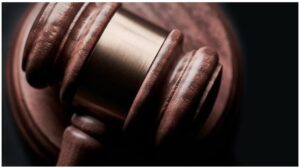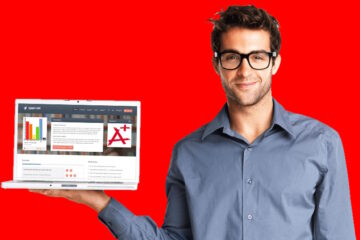It goes without saying that, throughout the years, technology has changed nearly every aspect of how we live our lives. If you come to think about it, very few things have stayed untouched by technology. It has impacted not only the way we perform our daily tasks but also the way in which business is conducted.
Various professional industries have had a lot to gain from integrating cutting-edge technology into their processes, including the legal field. This is why, in the past few years, more and more insurance companies, lawyers, and courthouses have leveraged the latest technological advancements to help them do their jobs better.
It’s safe to assume legal professionals that don’t take advantage of the technologies sitting now right in front of them will have a much harder task keeping up with the industry. This is especially true in the field of personal injury law, where cases need to be managed in a timely manner and evidence that is not gathered as soon as possible may be forever lost.
This is what we are here to talk about today, so, without further ado, let’s take a look at how technology can aid personal injury cases and make the situation easier for everyone involved.
Simplifying the Assessment of Personal Injury Claims with AI
When it comes to a personal injury claim, these cases usually get resolved in two ways: accepting the settlement or going to court. In most instances, a settlement is the easiest way to go, as it reduces costs and saves time for everyone involved.
Assessing the value of a claim can take a lot of time, putting insurance companies and lawyers through tremendous work trying to evaluate these claims. And, in some of these instances, time is of the essence in proving the plaintiff’s case. If you want to get compensation for workplace injuries in the UK, for example, you have a time limit of 3 years to take legal action in a personal injury case.
However, Artificial Intelligence can be leveraged by both insurance companies and lawyers to expedite the process, turning hours of work in seconds of clicking.
AI can be used to analyze documents, images, police reports, and medical documents in order to calculate payouts, making the process much easier to conduct. This helps victims understand how much compensation they are expected to receive very early on so that they understand if a settlement is in their favor or not. While this type of technology is still in its infant years, it is doing a tremendous job helping legal professionals. And, if you know a thing or two about machine learning, you know it is only a matter of time until these tools learn to get better and better.
Using Technology as Evidence Inside Courtrooms
They say the best lawyers are the ones that are able to prove their client’s case in an undeniable way. Still, the field of law isn’t always an exact science, even though we have guidelines to follow. This is why many lawyers have started leveraging technology to bring undeniable evidence to the courtroom.
A few years ago, a lawyer in Alberta was able to prove their case by providing data from the client’s Fitbit. The client, a personal trainer, was injured in a car crash that left them unable to perform their job. The lawyer used information from the Fitbit bracelet to prove their client was far less physically active after the accident than the average individual of the same age and fitness level. By objectively comparing the client’s Fitbit data with comprehensive data from similar individuals, the lawyer was able to prove the pain and damage their client went through after the accident.
Being able to use this kind of hard data to prove how the plaintiff’s life has been affected can significantly reduce the ability of the defense part to belittle the damage suffered by the victim. What’s more, time spent in court and legal fees are significantly reduced as well, as this type of data can be gathered and analyzed fast.
Some of you may be familiar with what the law calls burden of proof. In simple words, this represents how much evidence must be brought forward in order to win a specific case. If the plaintiff fails to meet these requirements, they may risk not being granted monetary compensation. In some cases, insurance companies will try to claim the plaintiff has had at least some level of contribution to the accident in an attempt to deny liability. When this happens, modern technology can come to the aid of the injured person, making dashcams or recording devices important examples of tech that can be used to prove who was at fault in an accident.
You Still Need a Skilled Lawyer
It is obvious that technology will start to become an important asset when solving personal injury cases. Still, it does not cover the fact that if you have been involved in an accident and you are entitled to compensation, you need a good lawyer. Even if all the evidence is out there in the most obvious way possible, the defendant’s attorney or the insurance company can still find ways to question your claim. This won’t happen if you have a skilled lawyer by your side.
No matter how many benefits technology will bring to courtrooms and especially to personal injury claims, the truth is, it will never entirely replace an experienced attorney. That’s because the evidence does not gather itself and, in most cases, does not speak for itself. It needs to be gathered, analyzed and presented to the court by someone like Grillo Law that understands it.
While it is true that technology makes a lawyer’s work much easier now, as they can automate a large part of what they do, there is no replacement for the skills, experience, or human approach they bring. Understanding the nuances of a case is something only humans have been able to do by now, and it represents an important part of winning the case. This is why, if you believe you may be entitled to compensation, it is always best you contact a reputable personal injury lawyer to help you settle the case with the best possible outcome.




0 Comments